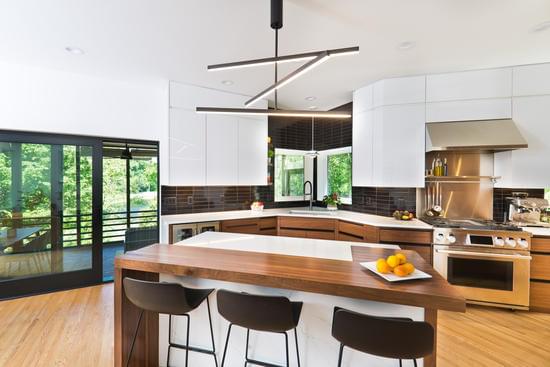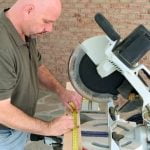Can you deduct home improvement costs on taxes, and if so, how? Understanding tax deductions for home improvements can potentially save you money and minimize your tax liability. Homeowners who have made upgrades or renovations to their property may be eligible for tax benefits, making it crucial to be aware of the rules and regulations regarding this matter.
When it comes to home improvement costs, the question of tax deductions often arises. It’s important to understand what qualifies as a “home improvement” in the eyes of the IRS and how to keep track of these costs for tax purposes. Additionally, eligibility, limitations, and restrictions play a crucial role in determining whether or not these expenses can be deducted from your taxes.
In this article, we will explore the ins and outs of claiming home improvement costs on taxes. From understanding what qualifies as a home improvement for tax deductions to maximizing your potential benefits and everything in between, we’ll provide you with the information you need to navigate this aspect of homeownership effectively. Let’s delve into the world of home improvement tax deductions and discover how you can leverage them to your advantage.
What Qualifies as a Home Improvement for Tax Deductions
When it comes to qualifying for home improvement tax deductions, it’s important to understand what types of expenses can be eligible. The following are some common examples of home improvements that may qualify for tax deductions:
- Energy-efficient upgrades such as solar panels, energy-efficient windows, or insulation
- Renovations to improve accessibility for individuals with disabilities
- Upgrades to the home’s heating, ventilation, and air conditioning (HVAC) system
- Improvements to the home’s plumbing or electrical systems
- Adding a new room or renovating an existing space
It’s important to note that routine repairs and maintenance do not typically qualify as home improvements for tax deductions. These may include things like fixing a leaky faucet or repairing a broken window. Additionally, any improvements made to increase the value of your home rather than for necessary repairs or maintenance may not be eligible for deductions.
When keeping track of home improvement costs for tax purposes, it’s essential to save all receipts and documentation related to the project. This includes invoices from contractors, receipts for materials purchased, and any permits obtained for the work. It’s also a good idea to take before and after photos of the project as further evidence of the improvements made.
Ultimately, understanding what qualifies as a home improvement for tax deductions can help homeowners maximize their potential tax savings. By keeping thorough records and understanding which types of projects are eligible, homeowners can effectively navigate the process of claiming home improvement costs on their taxes.
How to Keep Track of Home Improvement Costs for Tax Purposes
Keeping track of home improvement costs for tax purposes is essential in order to maximize potential deductions and ensure compliance with tax laws. The first step in this process is to maintain detailed records of all expenses related to the home improvement project. This includes receipts, invoices, and any other documentation that proves the amount spent on materials, labor, and other necessary expenses.
It is also important to differentiate between repairs and improvements for tax purposes. While repairs are usually considered as expenses for maintenance and are not eligible for tax deductions, improvements that increase the value or prolong the life of the property may qualify. Homeowners should keep a clear record of which expenses fall into each category to accurately report them on their taxes.
Another effective way to track home improvement costs is to use a dedicated accounting system or software. This allows homeowners to categorize expenses, generate reports, and easily retrieve information when it comes time to file their taxes. By utilizing technology, individuals can streamline the process of tracking home improvement costs and reduce the likelihood of errors or oversights.
Overall, staying organized and diligent in documenting home improvement costs is crucial for maximizing potential tax deductions. By keeping detailed records, differentiating between repairs and improvements, and using technology to aid in the process, homeowners can ensure that they are accurately reporting their expenses and taking full advantage of available deductions.
Eligibility for Home Improvement Tax Deductions
When it comes to eligibility for home improvement tax deductions, there are certain criteria that must be met in order for homeowners to claim these deductions on their taxes. Firstly, the improvement made to the home must increase its value or prolong its useful life.
This means that simple repairs and maintenance, such as fixing a leaky faucet or repainting a room, are not eligible for tax deductions. However, major projects like adding a new bathroom or renovating a kitchen would qualify.
Another important factor in determining eligibility is whether the home improvement was made for medical purposes. If the improvement was necessary to accommodate a specific medical condition of the homeowner, spouse, or dependents, then it may be eligible for a tax deduction. The key consideration here is that the improvement must directly relate to treating or mitigating the medical condition in order to be considered eligible.
Furthermore, it’s crucial to note that any home improvements made for aesthetic purposes alone do not qualify for tax deductions. This means that projects aimed solely at enhancing the visual appeal of the home without adding tangible value or function generally do not meet the eligibility requirements for tax deductions.
| Eligibility Criteria | Description |
|---|---|
| Increase in Home Value and Useful Life | Major projects that increase home value or prolong its useful life are eligible. |
| Medical Purposes | Improvements made to accommodate specific medical conditions may be eligible. |
| Aesthetic Purposes | Projects made solely for enhancing visual appeal generally do not qualify. |
Home Improvement Tax Deduction Limitations and Restrictions
Income Limitations
One important limitation to consider when it comes to deducting home improvement costs on your taxes is your income. In some cases, the IRS may limit or phase out the deduction if your income exceeds a certain threshold. It’s crucial to be aware of these limitations and consult with a tax professional to determine how they may affect your ability to claim home improvement expenses.
Type of Improvements
Not all home improvements are eligible for tax deductions. The IRS has specific guidelines on what qualifies as a deductible home improvement, and it’s essential to understand these criteria before claiming any expenses. Generally, improvements that increase the value of your home, make it more energy-efficient, or accommodate medical conditions may be eligible for deductions.
Use of the Improved Property
Another restriction to consider is the use of the improved property. If you’ve made improvements to a part of your property that is not exclusively for personal use, such as a rental unit or home office, the rules for deductions may differ. Understanding how the use of the improved property impacts your eligibility for tax deductions is crucial in navigating this aspect of home improvement costs.
Navigating the limitations and restrictions surrounding home improvement tax deductions can be complex, but being informed about these factors can help you maximize any potential tax benefits while ensuring compliance with IRS regulations.
Steps to Claim Home Improvement Costs on Taxes
Consult a Tax Professional
Before attempting to claim home improvement costs on your taxes, it’s important to consult with a tax professional. They can provide valuable guidance on what qualifies as deductible home improvements, the specific documentation needed, and any limitations or restrictions that may apply based on your individual tax situation.
Gather Documentation
When claiming home improvement costs on your taxes, it’s crucial to gather all relevant documentation to support your claim. This includes receipts, invoices, contracts, and any other paperwork related to the home improvement projects. Keeping thorough records will help substantiate your claims in the event of an audit by the IRS.
File the Correct Forms
In order to claim home improvement costs on your taxes, you’ll need to file the appropriate forms with the IRS. Depending on the nature of the improvements and their associated costs, this may include Form 5695 for residential energy credits or Schedule A if you’re itemizing deductions. Be sure to carefully follow the instructions for each form to ensure accurate reporting.
By following these steps and taking advantage of available tax deductions for home improvements, you can potentially reduce your tax liability while enjoying the benefits of a more comfortable and efficient living space. Keep in mind that tax laws are subject to change, so staying informed about current regulations is essential for maximizing your potential deductions.
Important Tips for Maximizing Home Improvement Tax Deductions
When it comes to maximizing home improvement tax deductions, there are several important tips to keep in mind. First and foremost, it’s crucial to keep detailed records of all your home improvement expenses. This includes receipts, invoices, and any other relevant documentation. Being organized and thorough in your record-keeping will help ensure that you can accurately claim the deductions you’re entitled to when tax time rolls around.
Another key tip for maximizing home improvement tax deductions is to familiarize yourself with the specific eligibility criteria outlined by the IRS. Not all home improvements will qualify for tax deductions, so it’s important to understand which ones do. Generally, improvements that add value to your home or prolong its life are more likely to be eligible for deductions. For example, energy-efficient upgrades, such as solar panels or energy-efficient windows, may qualify for tax deductions.
Furthermore, it’s advisable to consult with a tax professional or accountant who can provide guidance on navigating the complexities of home improvement tax deductions. They can offer valuable insights into which expenses qualify for deductions and how to properly document them.
Additionally, a tax professional can help ensure that you’re taking full advantage of any available tax breaks related to home improvements. By following these tips and seeking expert advice when needed, homeowners can effectively maximize their home improvement tax deductions while staying compliant with IRS regulations.
Real-Life Examples of Home Improvement Tax Deductions
When it comes to claiming home improvement costs on taxes, there are various scenarios where you might be eligible for deductions. Here are some real-life examples of situations where homeowners have successfully claimed home improvement tax deductions:
1. Energy-Efficient Upgrades: Installing energy-efficient appliances, solar panels, or making other eco-friendly improvements to your home can make you eligible for the Residential Energy Efficient Property Credit. This credit allows you to claim a percentage of the cost of qualified energy-efficient property.
2. Medical Necessity: If you make home improvements for medical reasons, such as adding wheelchair ramps, modifying bathrooms for accessibility, or installing support bars, these costs may be deductible as medical expenses if they meet certain criteria.
3. Home Office Expenses: If you use part of your home regularly and exclusively for business purposes, you may qualify for a home office deduction. This can include expenses related to repairs or improvements made to the designated home office space.
It’s important to keep detailed records and documentation of any home improvement projects that could potentially qualify for tax deductions. Consult with a tax professional to ensure that you meet all eligibility requirements and maximize your potential deductions based on your specific circumstances.
Conclusion
In conclusion, understanding and navigating home improvement tax deductions can provide significant benefits for homeowners. By being aware of what qualifies as a deductible home improvement, keeping meticulous track of costs, and understanding eligibility requirements and limitations, homeowners can potentially save money on their taxes. It is important to consult with a tax professional or accountant to ensure that all deductions are properly claimed and within the legal guidelines.
Maximizing home improvement tax deductions also involves staying informed about any updates or changes in tax laws related to home improvements. Taking advantage of available credits, incentives, and exemptions can result in substantial savings for homeowners undertaking renovation projects. Real-life examples of successful home improvement tax deductions can provide valuable insights into how to effectively claim and maximize deductions for various types of projects.
Overall, while navigating home improvement tax deductions may require time and effort, the potential benefits make it a worthwhile endeavor for homeowners. By following the steps outlined in this article and seeking professional guidance when needed, homeowners can make the most out of tax deductions for their home improvement projects.
Frequently Asked Questions
Are Any Home Improvements Tax Deductible?
Home improvements are generally not tax deductible, as they are considered personal expenses rather than business expenses. However, there are some exceptions for home improvements that are made for medical purposes or to accommodate a disabled individual. In these cases, the cost of the improvement may be deductible as a medical expense.
Can You Write Off New Flooring on Your Taxes?
The cost of new flooring for your home is typically not tax deductible, as it is considered a personal expense. However, if the new flooring is installed for a medical reason or to make the home more accessible for a disabled individual, you may be able to include the cost as part of a medical deduction on your taxes.
Can I Claim Kitchen Remodel on My Taxes?
Generally, the cost of a kitchen remodel is not tax deductible because it is considered a personal expense. However, if the remodel includes any improvements that are medically necessary or make the kitchen more accessible for a disabled individual, then those specific costs may be eligible for deduction as medical expenses on your taxes.
It’s important to keep detailed records and consult with a tax professional to fully understand and take advantage of any potential deductions related to a kitchen remodel.

I’m thrilled to have you here as a part of the Remodeling Top community. This is where my journey as an architect and remodeling enthusiast intersects with your passion for transforming houses into dream homes.





